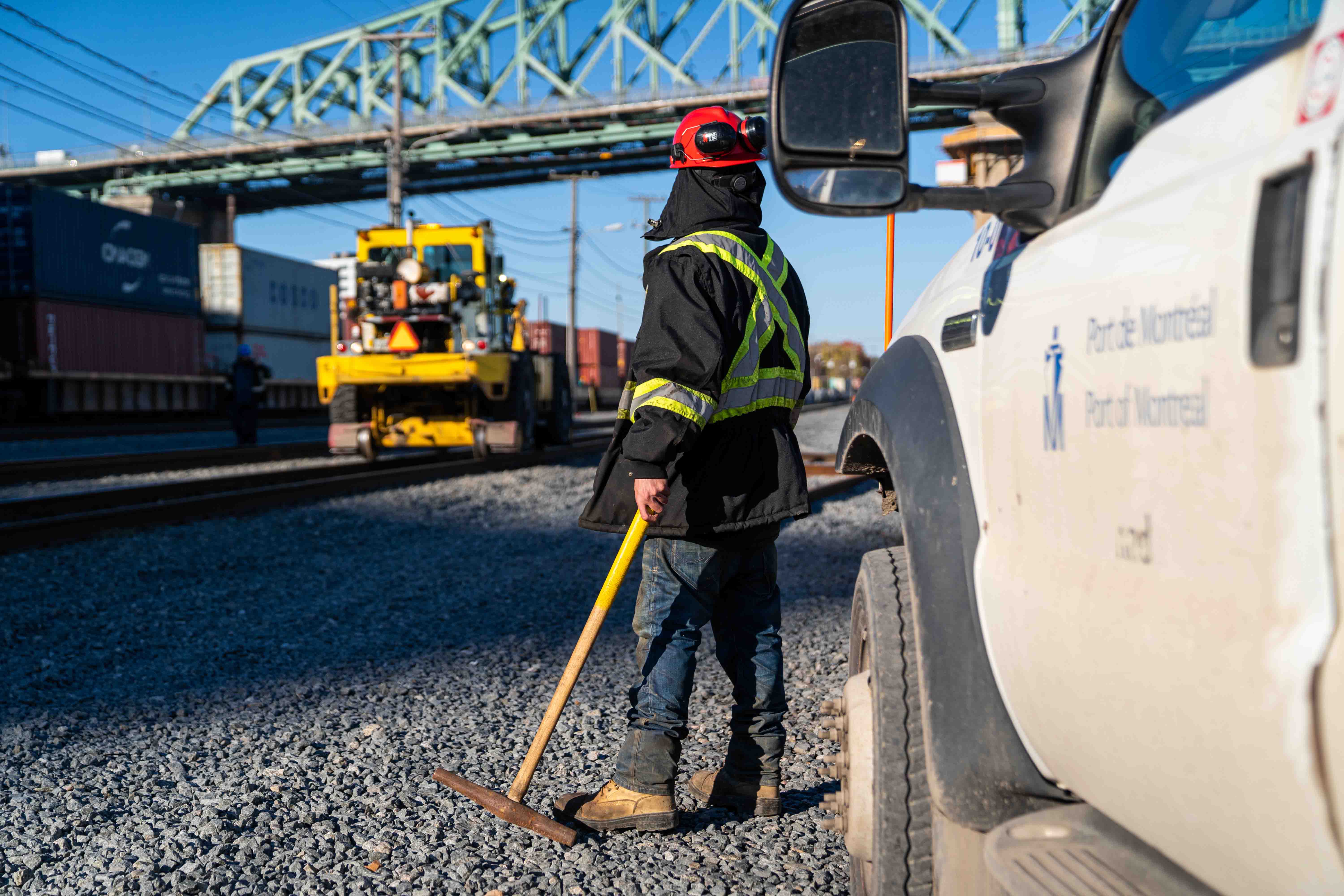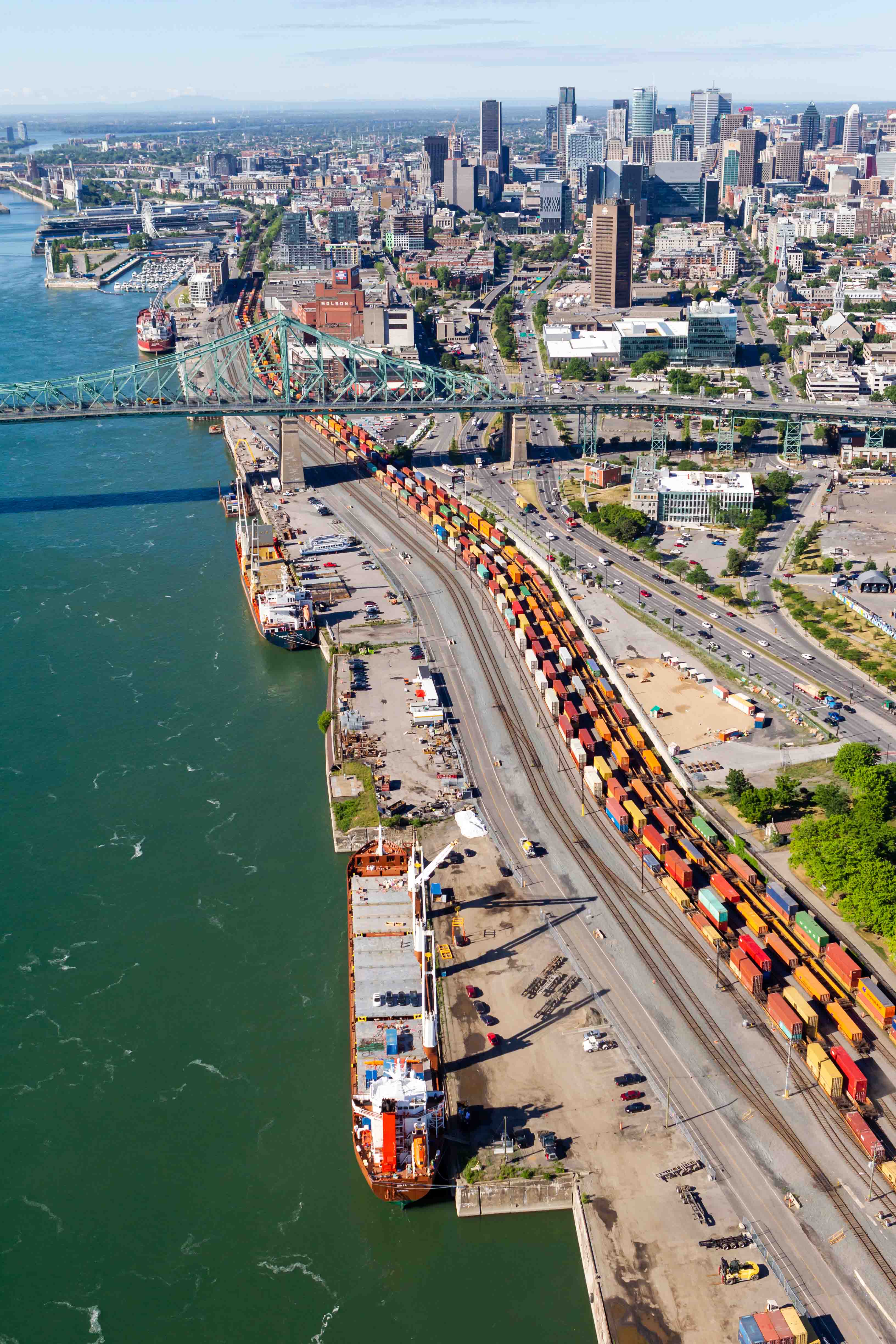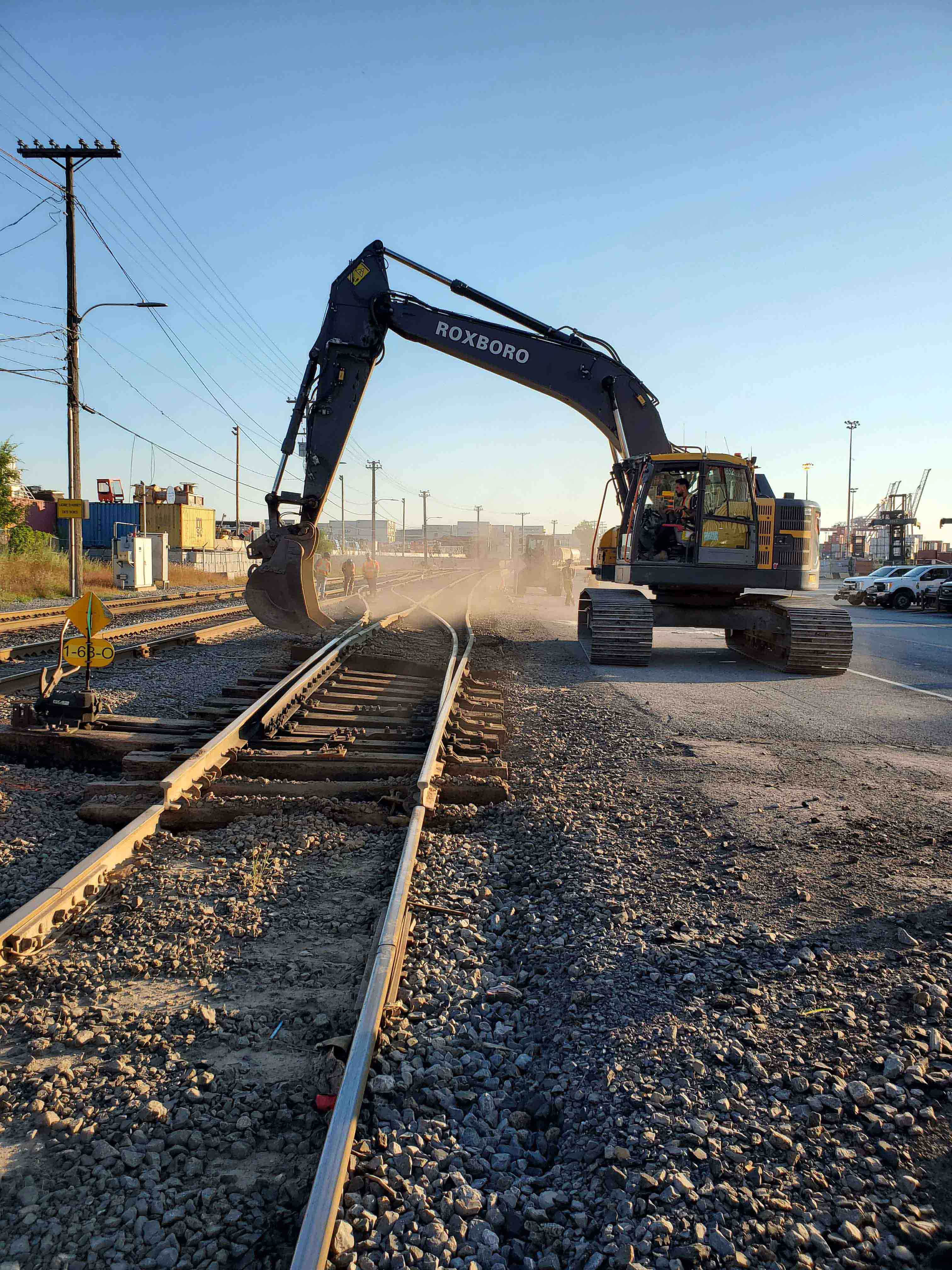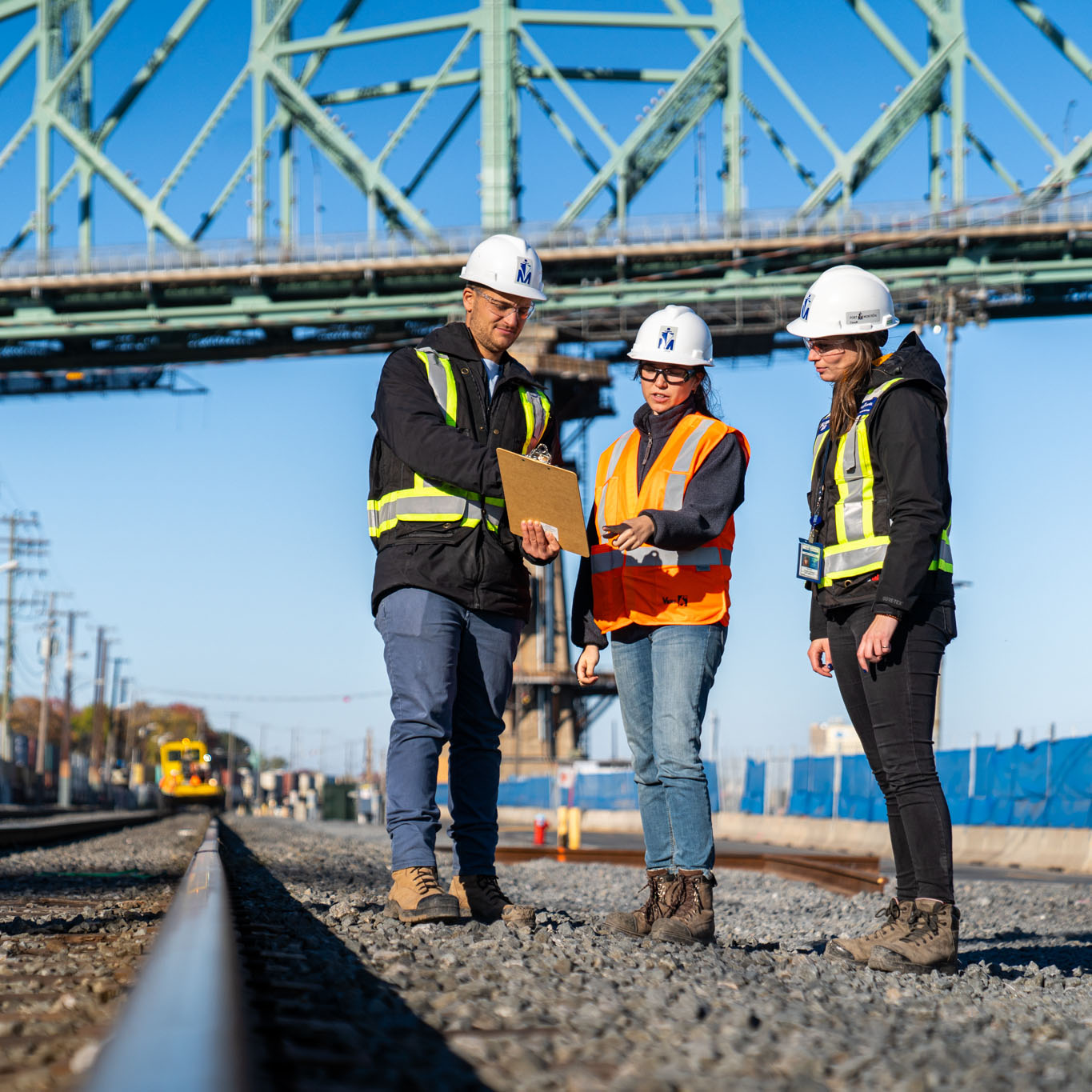
Fluidity is a team effort!
We know that the Port of Montreal stands out as “the Montreal model,” based on the fluidity of intermodal transfers and its ability to reach a pool of 110 million consumers. Approximately 45% of the Port’s cargo is transported by train, with 60 to 80 trains per week.
Operate
Underlying these figures, however, is a special infrastructure: the rail network on our docks, comprising 100 km of track and operated by the Port of Montreal’s 46 railway workers!
What does their work entail? Their role is to build the trains that will later join the CN and CP networks, and to sort the incoming trains. “Our mission is to bring certain sets of cars onto a given track, from one end of the Port to the other,” said Richard Dauphinais, rail operator.
“You have to learn how to get around safely. A moving train doesn’t stop on a dime”
Rail operators work in pairs. One conducts the locomotive while the other is on the ground, on a mission to ensure that the train can move from one end of the network to the other in total safety. A task more complex than it looks... “There’s movement on the terminals all the time,” said Filipe Miranda Araujo da Costa, who joined the team last spring. “We have to keep an eye on everything around us and check all the crossings, the switches, if we want to protect the workers and the equipment.” Most often this means keeping an eye on trucks, but also on employees assigned to maintenance or one of the various work sites on the terminals, as well as electricians, contractors and even on a repair being performed right on the tracks. “You have to learn how to get around safely,” added his colleague Hugo Gagnon. In this context, they have no choice but to be extremely vigilant, since a moving train doesn’t stop “on a dime”, so any careless error can result in a derailment or an accident.
“The key is communication between the person at the controls of the locomotive and the person on the ground,” said Hugo. Once the train is moving, only the colleague’s surveillance can alert us to a possible problem. So according to Filipe and Hugo, when the radio doesn’t work, “We don’t budge!”
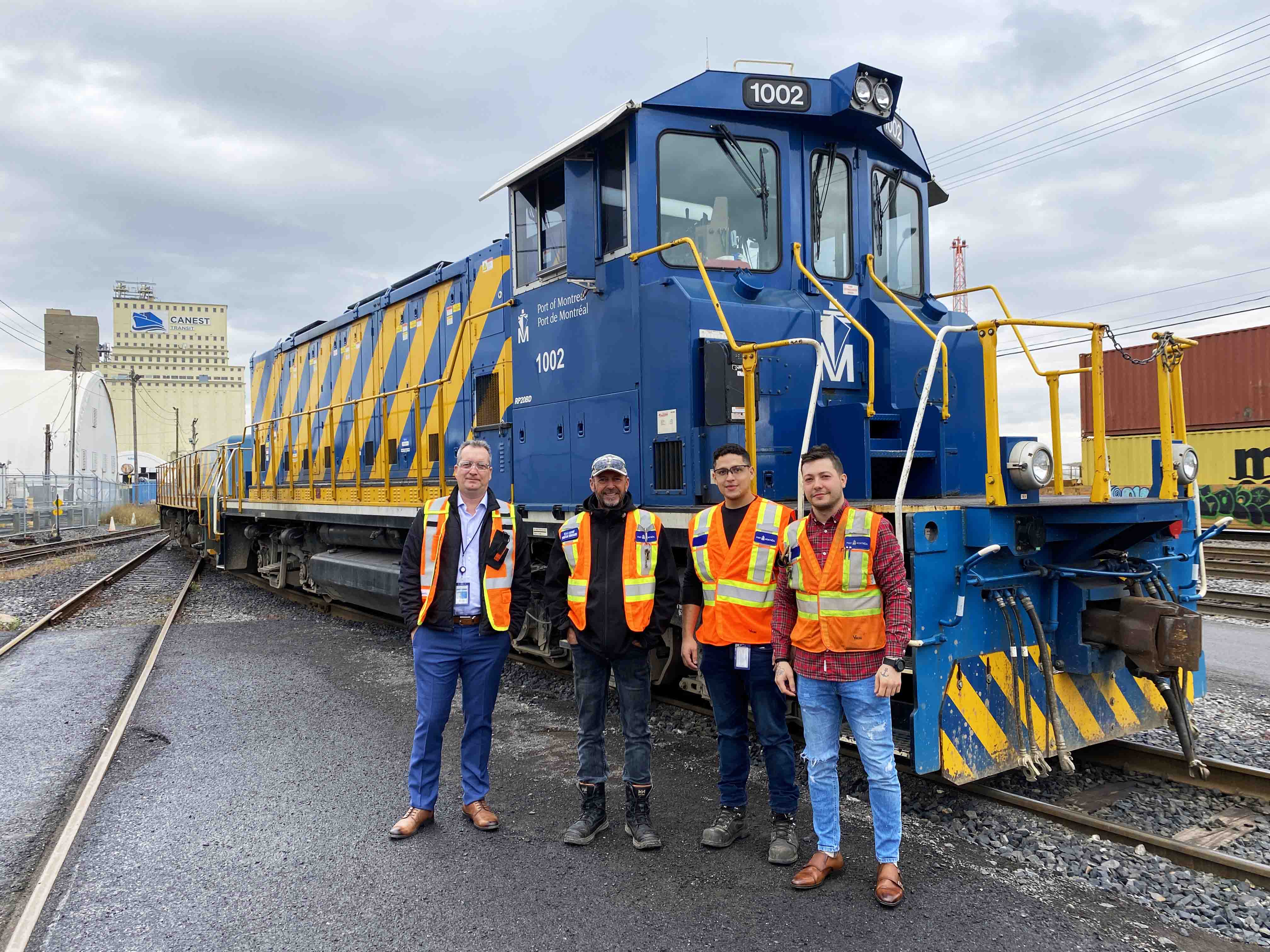
Maintain
For this to work, however, one thing is imperative: the MPA’s existing rail network must be maintained at all times. This is where the 14-person track maintenance team, supervised by Salim Ouazzani, comes in. “Our goal is to ensure network fluidity and guarantee the safety of both movement and users,” by keeping the railroads and the network’s 150 or so switches in good condition at all times.
Two specific factors contribute to the deterioration of the condition of the railroads: tonnage and weather conditions.
“Our goal is to ensure network fluidity and guarantee the safety of both movement and users”
Every year, their work schedule follows the rhythm of the seasons:
In the winter, the priority is de-icing and removing snow from the switches, which allow trains to change tracks.
In the spring, the first step after the thaw is to check and correct the track gauge, especially in curves. The gauge must be set to ensure proper contact between the rail and the axles, and in turn the smooth running of the train.
Next, the team successively replaces the wooden ties, opting for more durable and resistant materials, and performs surfacing and welding work on the rails to improve the rolling surface. Annual inspections are conducted to detect internal defects in the rails using an ultrasonic system. The tracks also need to be made more and more resistant as the number and weight of trains increase.
With increasing volumes comes the added challenge of “finding free stretches of track to maintain.” Not always easy on a heavily used network!
The results for the year 2022? About 1,600 track sleepers replaced, a dozen switches refurbished and two crossings rebuilt.
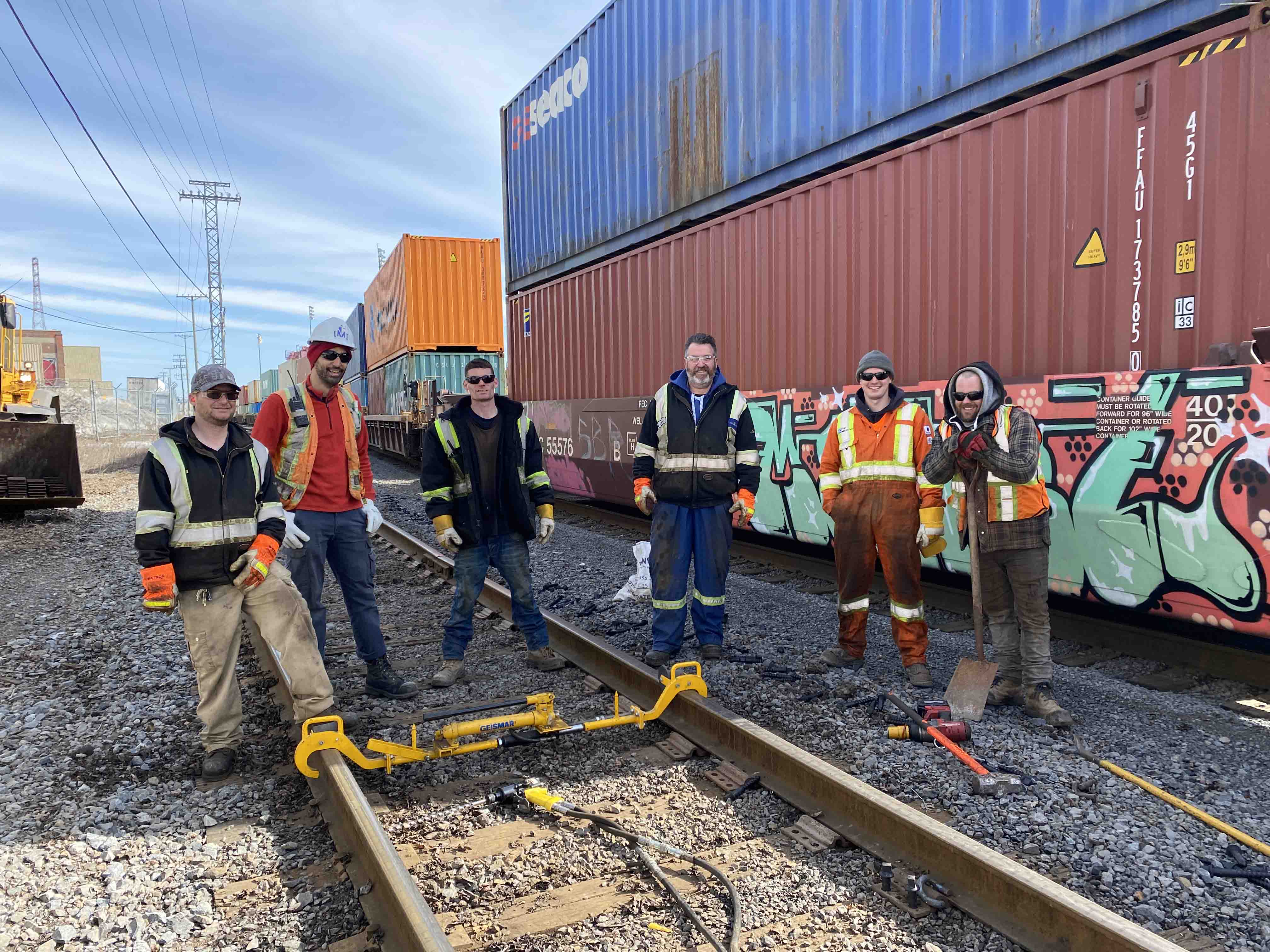 From left to right: Jean-François Leclerc, qualified operator, Salim Ouazzani, track supervisor, Dany Côté, qualified operator, Stéphane Allard, track team leader, as well as Kevin Margy and Jeremy Bordeleau from PNR RailWorks. The yellow tool in the photo is used to measure and tighten the gauge between the two rails: a Geismar hydraulic track gauge corrector.
From left to right: Jean-François Leclerc, qualified operator, Salim Ouazzani, track supervisor, Dany Côté, qualified operator, Stéphane Allard, track team leader, as well as Kevin Margy and Jeremy Bordeleau from PNR RailWorks. The yellow tool in the photo is used to measure and tighten the gauge between the two rails: a Geismar hydraulic track gauge corrector.
Optimize
Above and beyond this annual maintenance, our teams are also preparing for the future... In fact, to be able to keep freight traffic flowing despite the increase in volumes, they have been working since 2018 on a major rail capacity optimization project that will add six km of track to the Port’s existing network.
“Our mandate is to help boost the flow of rail operations, storage possibilities, and allow our intermodal network teams to work more efficiently,” said Gabrielle Voyer-Corbeil, the engineer in charge of this project.
After completing the first phase last year, which extended from sections 39 to 44, work on phase 2 was extended this year from the Jacques-Cartier Bridge to Préfontaine Street.
“Altogether, more than twenty-five people are working on the project, across all disciplines, including civil, electrical, telecommunications and rail.”
But how do you add tracks to an already tight and busy space? “Because of the Port of Montreal’s very narrow shape, adding new railroad tracks is a big challenge,” said Gabrielle. “So we had to move the Port Road to the river to free up enough space south of the existing tracks to be able to add two new tracks. That’s what we call ‘expanding from within’!”
Over the course of the year, one of the things crews did was install large piles to serve as the base for the retaining wall. This wall will hold the foundations of the new railroad tracks. Why was it necessary to solidify the soil under the future tracks? “The soil under the Port of Montreal is quite uneven,” said Gabrielle. “It’s mostly fill from the construction and widening of the Port of Montreal’s docks.”
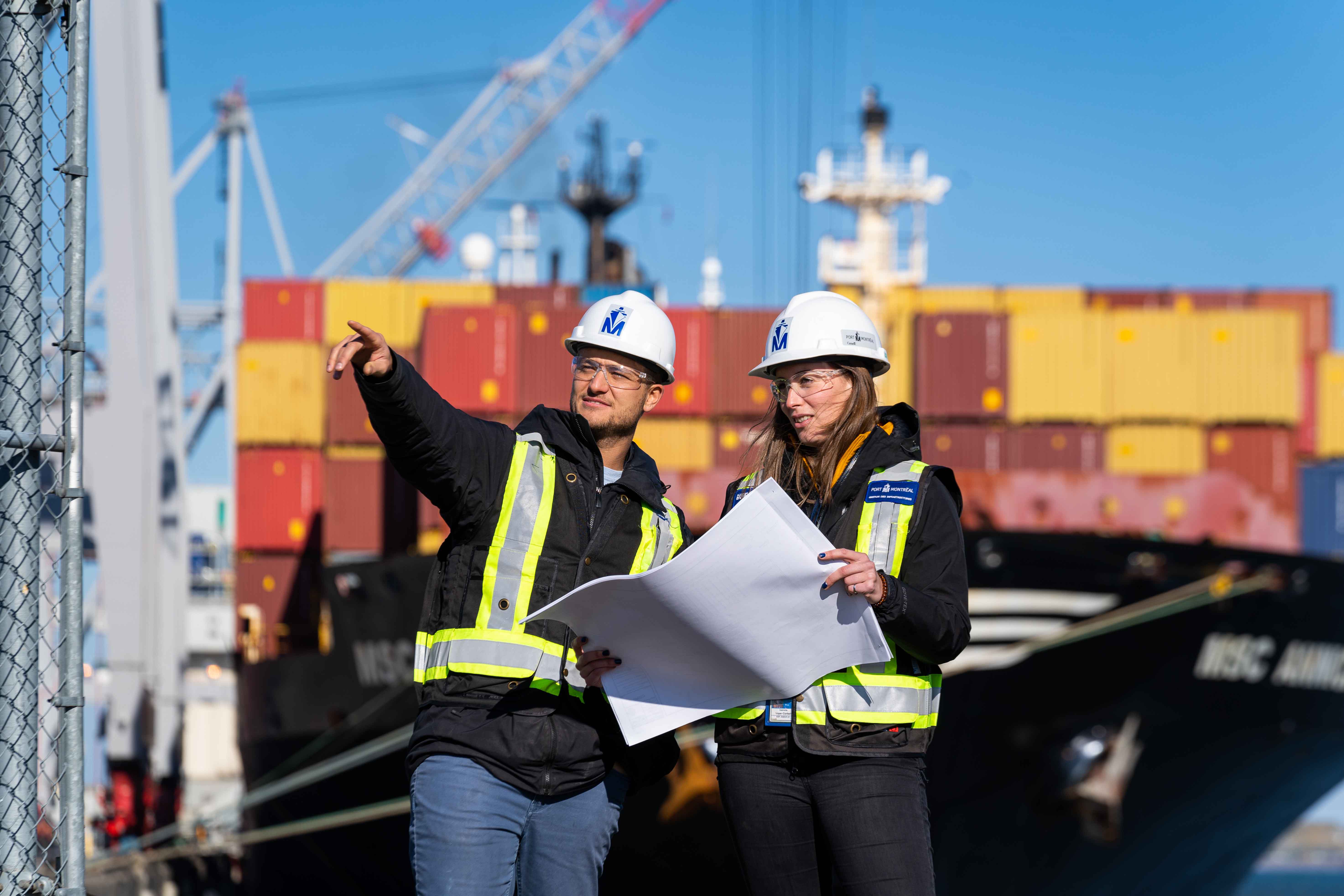
At the same time that the teams are relocating the Port Road, they are moving a lot of existing infrastructure as the work site progresses. The sewer, water, electrical and telecommunications networks must be gradually rebuilt. “We can’t shut down the Port. The electrical networks, for example, must serve the terminals twenty-four hours a day, seven days a week. This means that the construction of new networks must be carried out in parallel with the existing networks and that shutdowns for connections must be strategically planned. Altogether, more than twenty-five people are working on the project, across all disciplines, including civil, electrical, telecommunications and rail.”
Any surprises along the way? “The Port has a long history... While doing the excavation work, we found a lot of artefacts: old wooden walls, old concrete shed foundations and so on. It’s impressive!”
Several measures have also been identified to improve the project’s environmental record. For example, excavated soil is being used for backfill, the new Port Road is made of recycled concrete and asphalt, and the composite railroad ties are being made of concrete and asphalt. Sectoral studies on noise, dust, traffic and wildlife impacts were also conducted before the project was launched.
What are the next steps? Starting next spring, the last phase of the project will get underway, from sections 24 to 29, that is, from the Jacques-Cartier Bridge to Montcalm Street.
Fluidity is a team effort!

